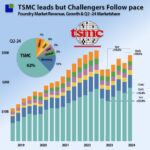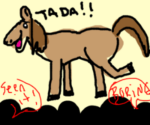Now that live events are filling up there are even more live events especially here in Silicon Valley. Synopsys, the #1 full IP provider, will host a processor summit here in Santa Clara next month. Given the popularity of anything RISC-V, I would expect this event to be very well attended so be sure and register in advance.
The networking opportunities are always worth the time spent at live events but looking at the agenda I would say the content will be the big draw. Not to mention the excellent food provided by the Marriot, Synopsys events are very well catered, absolutely.
The keynote sets the tone for the summit which is a full day event. The speaker is Alexander Kocher, a 30+ year semiconductor professional with deep experience in the automotive industry. Currently, Alexander is the CEO of new comer Quantauris which has an impressive list of investors: Robert Bosch GmbH, Infineon Technologies AG, Nordic Semiconductor ASA, NXP® Semiconductors, and Qualcomm Technologies, Inc.
Keynote:
Enabling RISC-V Solutions for IoT & Automotive Applications
RISC-V is generating a high interest across multiple industries. In the software-defined era, system integrators are intrigued by the prospects of increased innovation, agility and customization, while cutting cost and reducing supply chain risks.Those opportunities led to the creation of Quintauris, founded to accelerate the adoption of RISC-V globally by enabling solutions for the Automotive and IoT industries. Quintauris will describe the benefits RISC-V offers to the automotive and IoT market segments, and how the organization will overcome perceived challenges around open standard semiconductor design by nurturing the broad RISC-V ecosystem and facilitating commercial adoption.
Synopsys IP Processor Summit 2024 Registration
September 5, 2024 9:00 a.m. – 6:30 p.m @ the Santa Clara Marriott
Conference Introduction:
As electronic systems continue to become more complex and integrate greater functionality, SoC developers are faced with the challenge of developing more powerful, yet more energy-efficient devices. The processors used in these applications must be efficient to deliver high levels of performance within limited power and silicon area budgets.
Why attend?
Join us for the Processor IP Summit to get in-depth information from industry leaders on the latest in ARC-V™ RISC-V processor IP, ARC® VPX DSP IP and ARC NPX NPU IP along with related hardware/software technologies that enable you to achieve PPA differentiation in your chip or system design. Synopsys experts, partners, and our processor IP user community will discuss electronic market trends and present on a range of topics including artificial intelligence, automotive safety, software development and more. Sessions will be followed by a networking reception where you can see live demos.
Who Should Attend?
Whether you are a developer of chips, systems or software, the Synopsys Processor IP Summit will give you practical information to help you create more differentiated products in the shortest amount of time.
Synopsys IP Processor Summit 2024 Registration
September 5, 2024 9:00 a.m. – 6:30 p.m @ the Santa Clara Marriott
About Synopsys
Catalyzing the era of pervasive intelligence, Synopsys, Inc. (Nasdaq: SNPS) delivers trusted and comprehensive silicon to systems design solutions, from electronic design automation to silicon IP and system verification and validation. We partner closely with semiconductor and systems customers across a wide range of industries to maximize their R&D capability and productivity, powering innovation today that ignites the ingenuity of tomorrow. Learn more at www.synopsys.com.
Also Read:
Mitigating AI Data Bottlenecks with PCIe 7.0
The Immensity of Software Development the Challenges of Debugging (Part 1 of 4)









